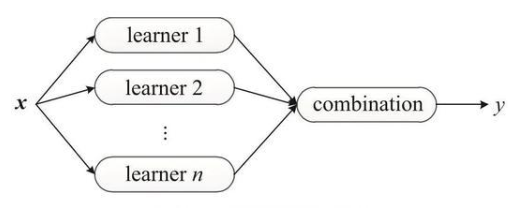我们知道,深度学习几乎已经应用在每一个领域,但如果我们能够构建一个基于深度学习的模型,让它能够给老照片着色,重现我们童年的旧回忆,这该多么令人激动啊!那么我们要怎么做呢?本文的作者将为大家介绍一个教程,通过深度学习方法为黑白老照片自动上色,带我们重新忆起那段老时光!
现如今,给照片着色通常是在 PS 中手工完成的。
所以说,如果要给一幅照片着色的话,短时间内是不可能完成的。它需要广泛的研究,要知道,单是一张脸的着色,就需要多达20层粉色、绿色和蓝色的色调才能使照片拥有恰到好处的效果。
现在,我要介绍的这个简单的神经网络——Inception Resnet V2,已经训练了120万张图像,可以帮助我们完成着色的任务。为了能够实现着色,我们将用 Unsplash 的肖像来训练这个神经网络。
介绍
在本节中,我将就如何渲染图像、数字颜色的基础知识以及神经网络的主要逻辑进行概述。
黑白图像可以用像素网格表示,每个像素都有与其亮度相对应的值。这些值的范围是0~255,对应的是从黑到白。
彩色图像是由三层组成:红色层、绿色层和蓝色层。你可以想象一下,在白色背景上将绿叶分成三个通道。直觉上,你可能会认为植物只存在于绿色层中。
但是,如下图所示,叶子在所有三个通道中都存在。这些层不仅决定了颜色,还决定了亮度。
例如,要得到白色,你需要所有的颜色均匀分布。通过增加等量的红色和蓝色,会使绿色变得更亮。因此,彩色图像使用三层来对颜色和对比度进行编码:
和黑白图像一样,彩色图像中的每一层,也有0~255的值。值0表示这个层中没有颜色。如果像素网格所有颜色通道的值都为0,那么这个图像像素就是黑色的。
神经网络在输入值和输出值之间创建了一种关系。为了能够更为准确地完成着色任务,网络需要找到能够将灰度图像和彩色图像联系起来的特征。
总的来说就是,我们需要找到能够将灰度值网格链接到三个颜色网格的特征。
f()是神经网络,[B&W]是我们的输入,[R]、[G]、[B]是我们的输出
现在,随着数据集的增加,由于我们处理的是高分辨率图像,因此我们需要更多的计算能力。为此,我个人更喜欢使用 Deep Cognition 的 Deep Learning Studio jupyter notebooks,它为Amazon 的深度学习示例提供了GPU,可用来训练模型。
如果你不熟悉如何使用Deep Learning Studio,可以看看以下这些资料:
Deep Learning made easy with Deep Learning Studio — An Introduction
http://u6.gg/eqfdu
Deep Learning made easy with Deep Learning Studio — Complete Guide
http://u6.gg/eqffa
A video walkthrough of Deep Cognition
http://u6.gg/eqfh7
https://github.com/Rajat2712/Deep-Learning-Studio
环境设置
Deep Learning Studio 最好的地方之一就是,只需单击 Deep Learning Studio Cloud,就可以轻松地完成安装,然后随时随地使用它们。
▌1.安装 Python 环境
要安装 Python 环境,请点击 DLS 中的 Environments 选项卡。
然后在 Available Environments 单击你要安装的环境。
对于这项任务,我们将安装以下环境:
Tensorflow-gpu-1.6.0
Keras-gpu-2.1.5
▌2.安装python包
单击启动环境。然后点击菜单的 Open New Terminal 打开终端。
在终端中键入以下命令:
1pipinstallscikit-image
上传数据集
打开文件浏览器,并为这个项目创建一个新文件夹。上传在 Github 存储库中可用的数据集。
如果需要自定义数据集,可以通过在 train 文件夹中上传高分辨率的彩色图像和test文件夹中的灰度图像来创建。
接下来我们开始编码
▌导入所有的库
1importkeras 2fromkeras.applications.inception_resnet_v2importInceptionResNetV2 3fromkeras.preprocessingimportimage 4fromkeras.engineimportLayer 5fromkeras.applications.inception_resnet_v2importpreprocess_input 6fromkeras.layersimportConv2D,UpSampling2D,InputLayer,Conv2DTranspose,Input,Reshape,merge,concatenate 7fromkeras.layersimportActivation,Dense,Dropout,Flatten 8fromkeras.layers.normalizationimportBatchNormalization 9fromkeras.callbacksimportTensorBoard10fromkeras.modelsimportSequential,Model11fromkeras.layers.coreimportRepeatVector,Permute12fromkeras.preprocessing.imageimportImageDataGenerator,array_to_img,img_to_array,load_img13fromskimage.colorimportrgb2lab,lab2rgb,rgb2gray,gray2rgb14fromskimage.transformimportresize15fromskimage.ioimportimsave16importnumpyasnp17importos18importrandom19importtensorflowastf
▌从Train文件夹中读取所有图像并加载初始权重值
1#Getimages2X=[]3forfilenameinos.listdir('Train/'):4X.append(img_to_array(load_img('Train/'+filename)))5X=np.array(X,dtype=float)6Xtrain=1.0/255*X7#Loadweights8inception=InceptionResNetV2(weights='imagenet',include_top=True)9inception.graph=tf.get_default_graph()
▌在融合层(fusion layer)两边分别创建编码器和解码器
Inception ResNet v2 是一个在120万张图像上训练的神经网络,也是现今最强大的分类器之一。与编码器并行,输入图像也通过 Inception ResNet v2 来运行。提取分类层并将其与编码器的输出合并。
通过将学习从分类转移到着色网络上,网络可以对图片中的内容有所了解。进而使网络能够将着色方案与对象表示相匹配。
将encoder_input输入到我们的编码器模型中,然后将编码器模型的输出与融合层中的 embed_input融合,用融合层的输出作为解码器模型的输入,最后返回最终的输出decoder_output。
1embed_input=Input(shape=(1000,)) 2#Encoder 3encoder_input=Input(shape=(256,256,1,)) 4encoder_output=Conv2D(64,(3,3),activation='relu',padding='same',strides=2)(encoder_input) 5encoder_output=Conv2D(128,(3,3),activation='relu',padding='same')(encoder_output) 6encoder_output=Conv2D(128,(3,3),activation='relu',padding='same',strides=2)(encoder_output) 7encoder_output=Conv2D(256,(3,3),activation='relu',padding='same')(encoder_output) 8encoder_output=Conv2D(256,(3,3),activation='relu',padding='same',strides=2)(encoder_output) 9encoder_output=Conv2D(512,(3,3),activation='relu',padding='same')(encoder_output)10encoder_output=Conv2D(512,(3,3),activation='relu',padding='same')(encoder_output)11encoder_output=Conv2D(256,(3,3),activation='relu',padding='same')(encoder_output)12#Fusion13fusion_output=RepeatVector(32*32)(embed_input)14fusion_output=Reshape(([32,32,1000]))(fusion_output)15fusion_output=concatenate([encoder_output,fusion_output],axis=3)16fusion_output=Conv2D(256,(1,1),activation='relu',padding='same')(fusion_output)17#Decoder18decoder_output=Conv2D(128,(3,3),activation='relu',padding='same')(fusion_output)19decoder_output=UpSampling2D((2,2))(decoder_output)20decoder_output=Conv2D(64,(3,3),activation='relu',padding='same')(decoder_output)21decoder_output=UpSampling2D((2,2))(decoder_output)22decoder_output=Conv2D(32,(3,3),activation='relu',padding='same')(decoder_output)23decoder_output=Conv2D(16,(3,3),activation='relu',padding='same')(decoder_output)24decoder_output=Conv2D(2,(3,3),activation='tanh',padding='same')(decoder_output)25decoder_output=UpSampling2D((2,2))(decoder_output)26model=Model(inputs=[encoder_input,embed_input],outputs=decoder_output)
现在,我们必须调整图像的大小来适应 Inception 模型。然后根据模型对像素和颜色值使用预处理器进行格式化。在最后一步中,我们通过 Inception 网络运行它并提取模型的最后一层。
1defcreate_inception_embedding(grayscaled_rgb): 2grayscaled_rgb_resized=[] 3foriingrayscaled_rgb: 4i=resize(i,(299,299,3),mode='constant') 5grayscaled_rgb_resized.append(i) 6grayscaled_rgb_resized=np.array(grayscaled_rgb_resized) 7grayscaled_rgb_resized=preprocess_input(grayscaled_rgb_resized) 8withinception.graph.as_default(): 9embed=inception.predict(grayscaled_rgb_resized)10returnembed
用ImageDataGenertor可以调整图像生成器的设置。如此一来得到不会重复的图像,从而提高了学习率。shear_rangetilts使图像向左或向右倾斜,其他设置为缩放、旋转和水平翻转。
1#Imagetransformer2datagen=ImageDataGenerator(3shear_range=0.2,4zoom_range=0.2,5rotation_range=20,6horizontal_flip=True)7#Generatetrainingdata8batch_size=10
我们使用 Xtrain 文件夹中的图像,根据上面的设置生成图像。然后,为X_batch提取黑色层和白色层,并为两个颜色层提取两种颜色。
为创建我们的 batch,我们使用经过调整的图像。将它们转换为黑白图像,并通过 Inception ResNet 模型运行它们。
1defimage_a_b_gen(batch_size):2forbatchindatagen.flow(Xtrain,batch_size=batch_size):3grayscaled_rgb=gray2rgb(rgb2gray(batch))4embed=create_inception_embedding(grayscaled_rgb)5lab_batch=rgb2lab(batch)6X_batch=lab_batch[:,:,:,0]7X_batch=X_batch.reshape(X_batch.shape+(1,))8Y_batch=lab_batch[:,:,:,1:]/1289yield([X_batch,create_inception_embedding(grayscaled_rgb)],Y_batch)
现在,我们将使用 “RMSProp” 优化器和均方误差作为损失函数来编译模型。
GPU 越强,得到的图像就越多。通过现在的设置,你可以使用50~100张图像。steps_per_epoch是通过将训练图像的数量除以 batch 大小来计算的。
1#Trainmodel2model.compile(optimizer='rmsprop',loss='mse')3model.fit_generator(image_a_b_gen(batch_size),epochs=50,steps_per_epoch=1)
1.0/255 表示我们使用的是 24 位 RGB 颜色空间,这意味着我们为每个颜色通道使用 0 ~ 255 之间的数字。这将会产生 1670 万种颜色的组合。
而人类只能感知 200 ~ 1000 万种颜色,因此,使用再大的颜色空间并没有多大意义。
与 RGB 颜色空间相比,LAB 颜色空间具有不同的范围。在 LAB 颜色空间中,颜色光谱 ab 范围从-128~128。通过将输出层中的所有值除以 128,将色谱范围限制在 -1 ~ 1 之间。
将它与神经网络相匹配,神经网络也返回 -1 ~ 1 之间的值。
在使用 rgb2lab 函数转换颜色空间之后,我们选择灰度层:[:,:,0],这是对神经网络的输入。[:,:,1:]选择两个颜色层:绿-红和蓝-黄。
1color_me=[]2forfilenameinos.listdir('Test/'):3color_me.append(img_to_array(load_img('Test/'+filename)))4color_me=np.array(color_me,dtype=float)5gray_me=gray2rgb(rgb2gray(1.0/255*color_me))6color_me_embed=create_inception_embedding(gray_me)7color_me=rgb2lab(1.0/255*color_me)[:,:,:,0]8color_me=color_me+.reshape(color_me.shape+(1,))
神经网络进行训练后,做出最终的预测,并将其转化为图像。
在这里,我们使用一个灰度图像作为输入,并通过训练好的神经网络来运行它。我们取在 -1 ~ 1 之间所有的输出值,然后乘以 128,就得到了 Lab 色谱中正确的颜色。
最后,用 三层 0 填充得到一个黑色的 RGB 画布。然后从测试图像中,复制灰度图层。然后将这两个颜色层添加到 RGB 画布上。再将这个像素值数组转换为图片。
1#Testmodel2output=model.predict([color_me,color_me_embed])3output=output*1284#Outputcolorizations5foriinrange(len(output)):6cur=np.zeros((256,256,3))7cur[:,:,0]=color_me[i][:,:,0]8cur[:,:,1:]=output[i]9imsave("result/img_"+str(i)+".png",lab2rgb(cur))
结果
在小型数据集上的结果,训练图像数 = 10,测试图像数 = 8;
▌测试数据:
▌经过50个轮数之后:
▌经过100个轮数之后:
▌经过1000个轮数之后:
▌经过2000个轮数之后:
-
神经网络
+关注
关注
42文章
4776浏览量
100927 -
图像
+关注
关注
2文章
1087浏览量
40511 -
深度学习
+关注
关注
73文章
5508浏览量
121314
原文标题:用AI给黑白照片上色,复现记忆中的旧时光
文章出处:【微信号:rgznai100,微信公众号:rgznai100】欢迎添加关注!文章转载请注明出处。
发布评论请先 登录
相关推荐
深度学习介绍
人类无法做到的事AI却轻易做到了
深度解析机器学习三类学习方法
Xilinx FPGA如何通过深度学习图像分类加速机器学习
AI上色对比人工调色 结果令人难以置信
深度讨论集成学习方法,解决AI实践难题





 通过深度学习方法为黑白老照片自动上色,带我们重新忆起那段老时光!
通过深度学习方法为黑白老照片自动上色,带我们重新忆起那段老时光!













评论